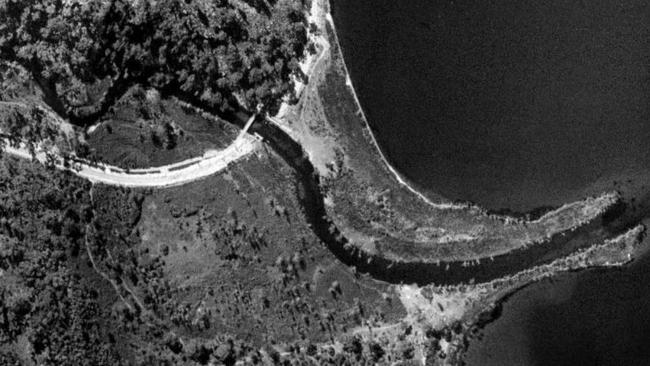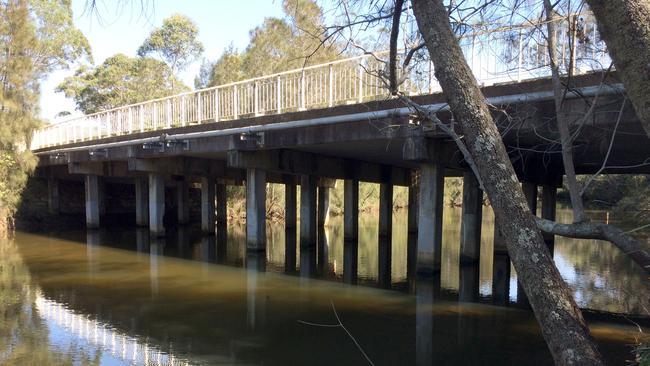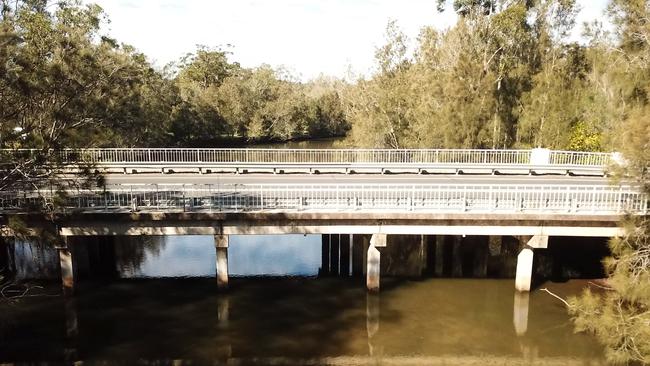The bridge that is a vital link between Frenchs Forest and North Narrabeen
Blink and you’ll miss it but if it wasn’t there you’d end up in the drink. Middle Creek Bridge No 3 was one of four bridges built when Wakehurst Parkway was built, including three across Middle Creek.

Manly
Don't miss out on the headlines from Manly. Followed categories will be added to My News.
- Nazi camp at Deep Creek at North Narrabeen
- After the war, from Russia with love
- Sydney’s version of Catch Me If You Can
- The Manly family torn apart by World War I
Blink and you’ll miss it but if it wasn’t there you’d end up in the drink.
Middle Creek Bridge No 3 was one of four bridges built when Wakehurst Parkway was built, including three across Middle Creek.
There could have been six bridges across Middle Creek but the Department of Main Roads obviated the need for the extra three by twice diverting the course of the creek.
While Middle Creek bridges Nos 1 and 2 are barely noticeable, Bridge No 3 is more prominent because you briefly see the creek as you cross the bridge.

And Middle Creek Bridge No 3 differs from the other three bridges along Wakehurst Parkway in that it was the only one built with a footpath along one side.
That’s because Warringah Council agreed to pay half the cost of building a footpath along one side of Middle Creek Bridge No 3 and even got to nominate on which side of the bridge it wanted it built.
Even the bridge across Deep Creek wasn’t afforded that luxury, although there was a timber bridge close to the mouth of Deep Creek that would have been more than adequate for pedestrians – at least while it lasted.

Warringah Council first became appraised of the state government’s plans for what would become Wakehurst Parkway in March 1939, when the Government Gazette announced that a main road would be built from Seaforth to Frenchs Forest and approval was given in October 1939 for the work to be undertaken withy unemployed relief labour on a rationed basis and then in December 1939 the Government Gazette announced that the road would be extended from Frenchs Forest to North Narrabeen, although by then the council had already been told of the planned extension.

As well as a number of local men being employed on the project, the council benefited financially from the work because the Department of Main Roads (DMR) bought large quantities of gravel from the council for the work.
The DMR consulted with Warringah Council about the precise location of the permanent bridge over Middle Creek, especially as to known flood levels and so as not to prevent navigation under the bridge by small recreational boats.
In November 1940, the DMR asked the council if it would object to a temporary bridge being built across Middle Creek so roadworks between Middle Creek and Deep Creek could be undertaken.

The temporary bridge was built immediately upstream from the permanent bridge the DMR planned to built across Middle Creek.
The permanent bridge across Middle Creek was built in 1943-1944 and comprised five concrete slabs supported on concrete piles.
The bridge is 9.75m wide and has a footway on the eastern side that is 1.1m wide.
The footway was already under consideration in September 1941, when the DMR asked the council if it wanted the footway on the eastern side of the bridge – which was the DMR’s preference – and whether the council would contribute half the estimated £680 cost of building the footway.

The DMR’s plan was for a footway 1.5m wide but the council baulked at the cost, effectively slowing work on the bridge, but eventually the width of the footway was reduced to 1.1m and the cost to the council was eventually reduced to £150.
At one point, the DMR was so short of material with which to surface parts of Wakehurst Parkway that it asked the council if it could extract between 4000 and 5000 cubic yards of chocolate shale from Long Reef but the council refused and the DMR eventually bought 6000 cubic yards of stone from the council’s quarry at Oxford Falls at cost plus 12.5 per cent.

Eventually Wakehurst Parkway was completed in mid-1946, although by then the road had been officially opened and named after the state governor at the time the road had been devised – John de Vere Loder, 2nd Baron Wakehurst, or Lord Wakehurst as he was generally known.

But the official opening of the bridge on March 22, 1946 didn’t mark the end of work on the bridge over Middle Creek.
In May 1946 the deck at the abutments at each end of the bridge was raised and between 1951 and 1956 the bridge was extended with a 5m slab at each end, while rubble walls were built to cover the gaps below the approach spans, the total cost of the work being £10,747.
No doubt one day the bridge will be altered or replaced altogether if Wakehurst Parkway is ever widened from two lanes to four.
